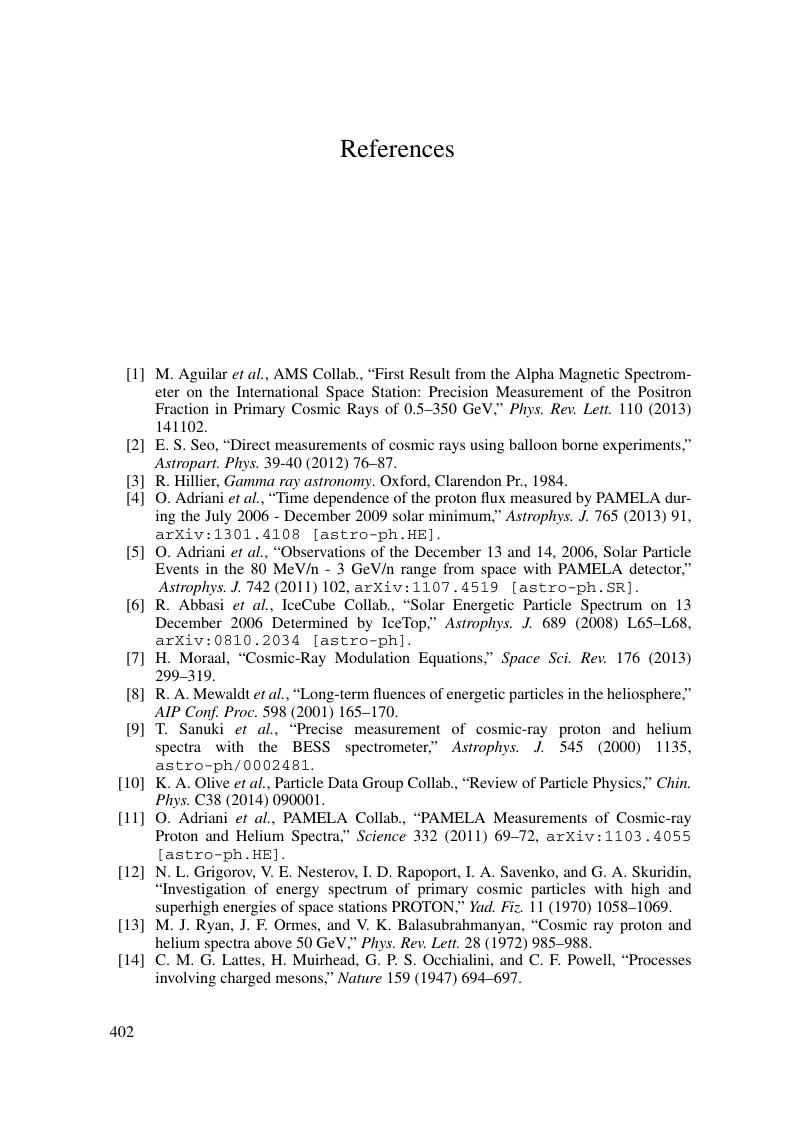Book contents
- Frontmatter
- Contents
- Preface to the first edition
- Preface to the second edition
- 1 Cosmic rays
- 2 Cosmic ray data
- 3 Particle physics
- 4 Hadronic interactions and accelerator data
- 5 Cascade equations
- 6 Atmospheric muons and neutrinos
- 7 Neutrino masses and oscillations
- 8 Muons and neutrinos underground
- 9 Cosmic rays in the Galaxy
- 10 Extragalactic propagation of cosmic rays
- 11 Astrophysical γ -rays and neutrinos
- 12 Acceleration
- 13 Supernovae in the Milky Way
- 14 Astrophysical accelerators and beam dumps
- 15 Electromagnetic cascades
- 16 Extensive air showers
- 17 Very high energy cosmic rays
- 18 Neutrino astronomy
- Appendix
- References
- Index
- References
References
Published online by Cambridge University Press: 05 June 2016
- Frontmatter
- Contents
- Preface to the first edition
- Preface to the second edition
- 1 Cosmic rays
- 2 Cosmic ray data
- 3 Particle physics
- 4 Hadronic interactions and accelerator data
- 5 Cascade equations
- 6 Atmospheric muons and neutrinos
- 7 Neutrino masses and oscillations
- 8 Muons and neutrinos underground
- 9 Cosmic rays in the Galaxy
- 10 Extragalactic propagation of cosmic rays
- 11 Astrophysical γ -rays and neutrinos
- 12 Acceleration
- 13 Supernovae in the Milky Way
- 14 Astrophysical accelerators and beam dumps
- 15 Electromagnetic cascades
- 16 Extensive air showers
- 17 Very high energy cosmic rays
- 18 Neutrino astronomy
- Appendix
- References
- Index
- References
Summary

- Type
- Chapter
- Information
- Cosmic Rays and Particle Physics , pp. 402 - 440Publisher: Cambridge University PressPrint publication year: 2016



